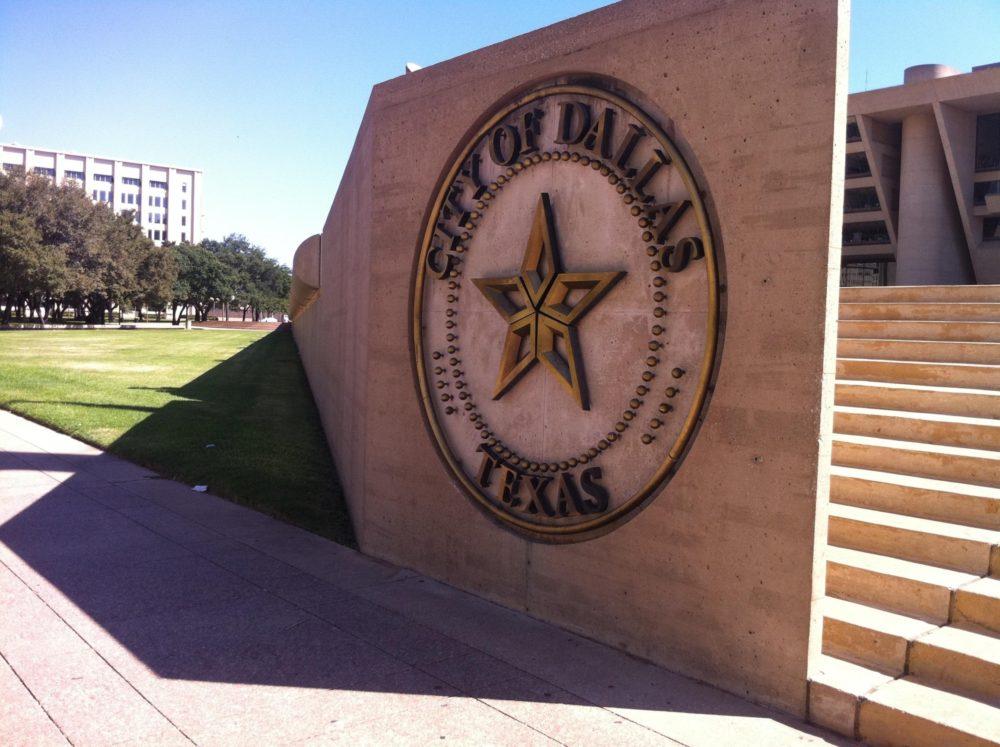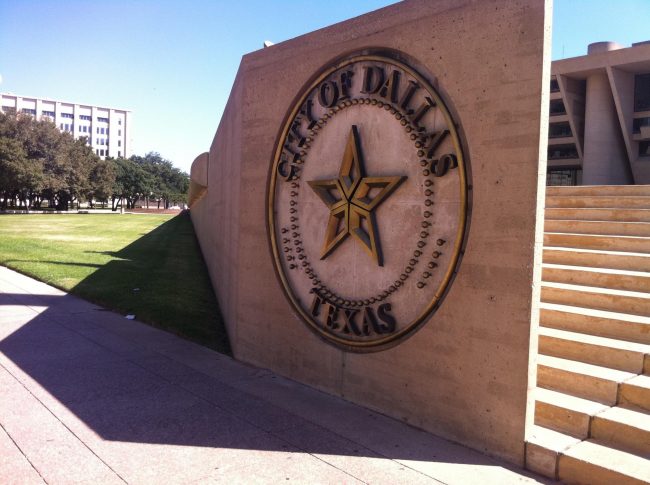
Dallas City Hall is buzzing with disagreement over the 2011 redistricting process, which is trying to take into account shifting the shifting racial make up of Dallas. (Jessica Huseman/The Daily Campus)
This year’s task of redrawing City Council district lines has sent citizens and council members into controversy over the most popular map’s proposed reduction of four majority black seats to three.
“I will not support a map that has any less than four African American majority seats,” Carolyn Davis, representative for District 3, said.
A “fair and balanced map” would be one in which there were four black majority seats and four Hispanic majority seats, Davis said.
Should the map pass in its current form, the changes might mean Davis, Dwaine Caraway, Vonciel Hill and Tennell Atkins would lose their seats.
Dallas must redo district lines every 10 years based on the results of the census.
The 2010 Census showed a 20 percent increase in the city’s Hispanic population, and a decline of the black population by 1.7 percent.
Dallas’ white population has declined 16 percent.
The shift in the racial make up of Dallas has led the seats around the Pleasant Grove area of Dallas, which was previously split into four majority black districts, to become majority Hispanic.
Now these districts have been changed to reflect the change, and Hill and Caraway have been put in the same district.
This year’s redistricting process was significant for more than just racial changes — it is also the first year citizens have been intimately involved in the process.
This year was the first year the city made the expensive software for drawing district maps available to the public on public computers.
Previously, the high cost of the software had made it impossible for average citizens to propose their own map.
“Legally it’s always been open to citizens, but that doesn’t mean it’s actually possible. [The city] didn’t allow you to use their computers or software to draw the maps, but they would let you submit them,” Bill Betzen, a resident of Dallas who
submitted his own map this year, said.
Betzen got involved because he had a problem with the rampant gerrymandering present in previous district maps.
“I’m for representative government where it is one person one vote, and I think that has been distorted in the city of Dallas, and I think it is a significant contributing factor to the inability to the south side of town to develop in conjunction with the north side of town,” he said.
Betzen designed a map he believes gives minorities the most representation of any map currently being considered.
Mayor Mike Rawlings agreed with him, and has now endorsed Betzen’s map.
Betzen’s map has three majority black districts, five majority Hispanic districts as well as two minority opportunity districts.
Betzen said the rise in the Hispanic population as well as the decrease in the black population had to be taken into consideration when determining how many black majority districts to assign.
“Over the last 10 years, the population in the four currently black majority districts has gone down an average of 8 percent,” he said. “They went from an average of 56 percent to currently 48 percent black voting age population, so you have to have that in mind.”
Betzen’s map also has 11 miles less of boundary lines compared to the other map in consideration, which he said is due to less gerrymandering, and accuses the minority members of city council of not caring about minorities as much as keeping their own seats.
“The minority members of the board are more interested in other things than minority representation,” he said. “They are interested more in protecting political territory than anything else.”
But the minorities members of City Council are not the only ones who have an issue with Betzen’s map.
Councilwoman Ann Margolin, who supports the most favored map, said even if Betzen’s map is more representative of minorities, his map “doesn’t address issues of concern to me and my district such as keeping certain neighborhoods in one district with one representative.”
Margolin said Betzen’s map tore away the western boundary of her district, which she finds problematic.
“The people who live there are the same demographic as those across the street in my district. I could not support a map that did this to neighborhoods,” she said.
Margolin said that, while Betzen’s map may have more compact districts, the map she favors better supports the collective interests of neighborhoods and helps decrease problems from gerrymandering in the past and is “much more compact” than Dallas’ current district map.
In the end, the controversy over Betzen’s map and the map currently favored by the majority of representatives may be for not.
Betzen does not believe his map stands a chance because of the advantage the council members have in drawing support to their map.
“They all have mass mailings to attract supporters, and because none of them have taken up my cause I don’t have that advantage,” he said. “I have gotten some pretty positive comments from a lot of people, but it is hard to fight political mailing list.”
Though his map doesn’t have the backing of the council members, he said more than 20 percent of the speakers that showed up at the last City Council meeting were there to support him, something he said speaks to the validity of his proposal.
A final map will be decided upon on Oct. 15, and will then be sent to the Justice Department for review and approval.
For a Q&A with Bill Betzen, to see the maps side by side and to vote in a poll on the redistricting plans, please visit The Daily Campus politics blog.

















